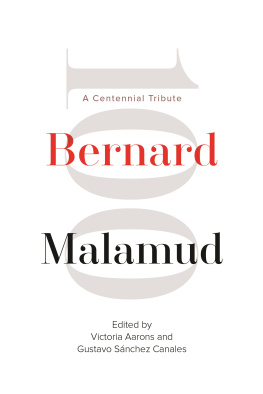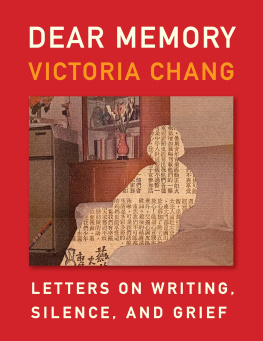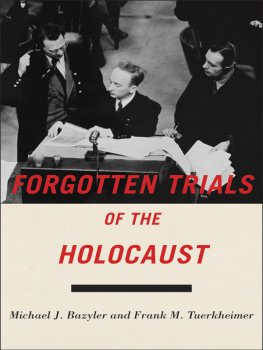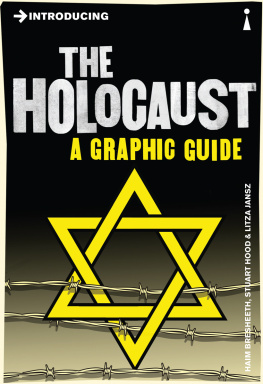Library of Congress Cataloging-in-Publication Data
Names: Aarons, Victoria, author.
Title: Holocaust graphic narratives : generation, trauma, and memory / Victoria Aarons.
Description: New Brunswick, New Jersey : Rutgers University Press, [2019] | Includes bibliographical references and index.
Identifiers: LCCN 2019008414 | ISBN 9781978802568 (cloth) | ISBN 9781978802551 (paperback)
Subjects: LCSH: Holocaust, Jewish (19391945), in literature. | Graphic novelsHistory and criticism. | Autobiography. | Holocaust, Jewish (19391945)Influence. | Literature, Modern20th centuryHistory and criticism. | Literature, Modern21st centuryHistory and criticism.
Classification: LCC PN56.H55 A238 2019 | DDC 741.5/358405318dc23
LC record available at https://lccn.loc.gov/2019008414
A British Cataloging-in-Publication record for this book is available from the British Library.
Copyright 2020 by Victoria Aarons
All rights reserved
No part of this book may be reproduced or utilized in any form or by any means, electronic or mechanical, or by any information storage and retrieval system, without written permission from the publisher. Please contact Rutgers University Press, 106 Somerset Street, New Brunswick, NJ 08901. The only exception to this prohibition is fair use as defined by U.S. copyright law.
www.rutgersuniversitypress.org
Visual Testimonies of Memory
Pictures that lock the story in our minds.
Susan Sontag, Regarding the Pain of Others
When the historians close their books, when the statisticians stop counting, the memorialists and witnesses can no longer remember, then the poet, the novelist, the artist comes and surveys the devastated landscape left by the firethe ashes. He rummages through the debris in search of a design. For if the essence, the meaning, or the meaninglessness of the Holocaust will survive our sordid history, it will be in works of art.
Raymond Federman, The Necessity and Impossibility of Being a Jewish Writer
Art Spiegelmans Maus, the first graphic narrative to receive a Pulitzer Prize (1992), established the genre of the graphic novel as a legitimate form of Holocaust representation. Spiegelmans groundbreaking work created an opening for Holocaust graphic storytelling, legitimizing further experimentation with the graphic form as a meaningful, even provocative genre of literary expression of the Shoah. The success of Maus provided graphic novelists Spiegelman implicitly stages his extended, visually and verbally narrated story of a Holocaust survivors harrowing experiences and the imprint of the deeply engrained past on the psychic life of the inheritor of that history against generic expectations and incongruities of form and content. In drawing upon both discursive modes of storytelling and visual elements of comics, Spiegelman reconceived the ways in which we envision and narrate the broader strokes of history as they inform and are informed by personal histories. Spiegelmans work envisions the intimacies of history, providing midrashicinterpretive, expansive, elastic, and performativemoments of exploration and adjudication, extending the narrative of the past into the present and thus reading history responsively. Maus, in many ways, then, created not only an innovative outlet for comics but a new genre for Holocaust expression, new ways of seeing and bearing witness to the Holocaust and its haunting aftermath for generations extending beyond that history.
The genre of the graphic narrative, in the past two decades in particular, has moved from underground to mainstream. Graphic narratives have emerged from the experimental, avant-garde underground to the forefront of literary production and consumption. Once considered an icon of the emergence of pop culture, an extension of the generic mixing implied by the neologism commix, the graphic novel has taken on the dual representational seriousness of the authentically personal and the complexly political. As Ariela Freedman proposes in the introduction to a special issue of Partial Answers devoted to Comics and the Canon, The new respectability of comics has been especially evident over the last three decades, as comics, graphic memoirs, and graphic novels have continued to emerge as literary, artistic, and cultural artifacts of central importance. Comics are no longer seen as outside what we might broadly call a literary and fine-arts canon, as objects belonging to low culture rather than high culture, as ephemeral items rather than artworks of lasting and iconic significance, as lesser hybrids of word and image rather than Thus in the decades since the initial publication of Maus, from its original serial distribution in Raw magazine as a countercultural artifact to its two-volume book form (as well as its subsequent iterations in MetaMaus, In the Shadow of No Towers, and Breakdowns), the graphic novel has become a recognized genre of Holocaust literary representation. Since the publication of Maus (volume 1 in book form in 1986, volume 2 in 1991), an array of graphic novelists and illustrators in the United States and abroad have attempted, to varying degrees of success, to give voice to the extended trauma of the Holocaust.
With memory as the controlling trope, these graphic writers and cartoonists, through the juxtaposition of text and image, extend the narrative of the Holocaust into the present, creating a midrashic imperative to reconstruct and reanimate the experience of the Shoah, giving voice to unrecoverable loss. By midrash, in this context, I am referring loosely to an interpretive process of storytelling, a response to those moments of interruption, pauses, and gaps in a narrative that open themselves up to further analysis and commentary. Here we might consider Scott McClouds definition of closure in comics as a process of midrashic interpretation. Closure, as McCloud defines it, actively engages the reader/viewer in the phenomenon of observing the parts but perceiving the whole. As we navigate our way among the interstices between panels, the empty spaces on the page abut and leave room for interpretive intervention. We thus perform a midrashic perceptual leap in response to the perceived incompletion of the text. Midrashic practice begins with a primary text open to interpretive possibilities. In the Holocaust graphic narrative, individual eyewitness accounts and experiences form the primary narrative as it extends generationally in this dialectic of part and whole, itself representing the fragments of memory and offering potential responses to rupture.
The popular and critical reception of Maus, then, changed many of our assumptions about the capacity of comics to cross over into a domain of conceptual structures and approaches, taking up, in longer narrative form, those subjects, patterns of narration, literary conceits, and rhetorical tropes conventionally associated with more traditional, discursive literary forms such as the novel, autobiography, memoir, and creative nonfiction. While, to be sure, the comics medium has a long tradition of political cartooning (i.e., political critiques, satires, caricatures) and, more specifically, World War II cartoons circulated for the purposes of both propaganda and censure, the Holocaust as the subject of extended sequential art narratives, as pioneering cartoonist Will Eisner defined the genre, has a more limited and restricted history. The interplay of distinct moments in history and the reach of the imagination unrestricted by temporal, spatial, and geographical boundaries create urgency and immediacy. Here the reader/viewer and the author/graphic artist are cocollaborators in the movement across time and topography as they enter the muddied borderlands of memory. An intersection of personal and collective histories characterizes these graphic narratives. This intersection produces a sense of historical rupture and disequilibrium, joining potentially an individuals connection to the past with the cumulative, wide-scale effect of moments in history. In this way, Holocaust graphic narratives create a visual testimony to the past, to devastating loss as well as to survival.











